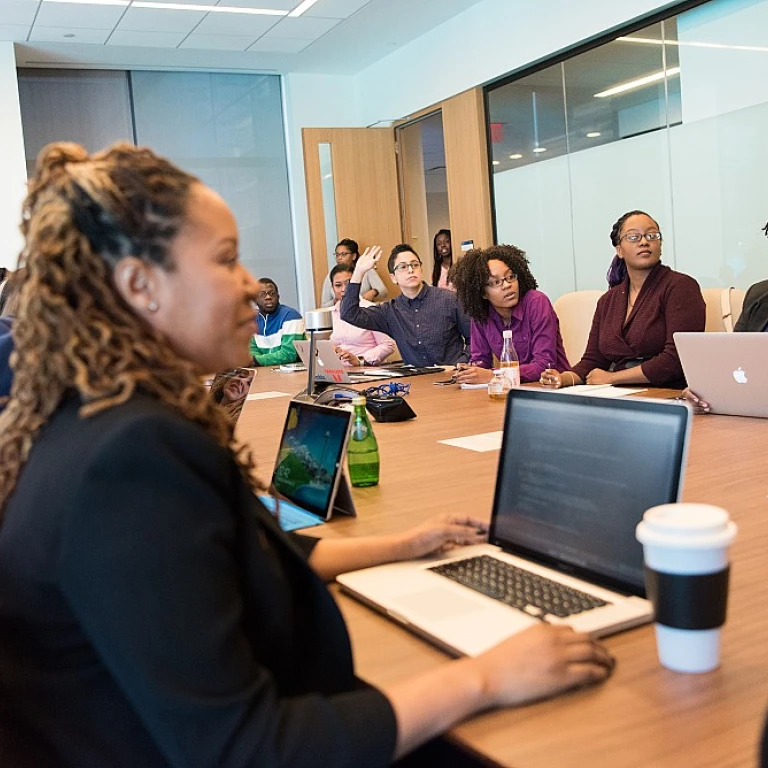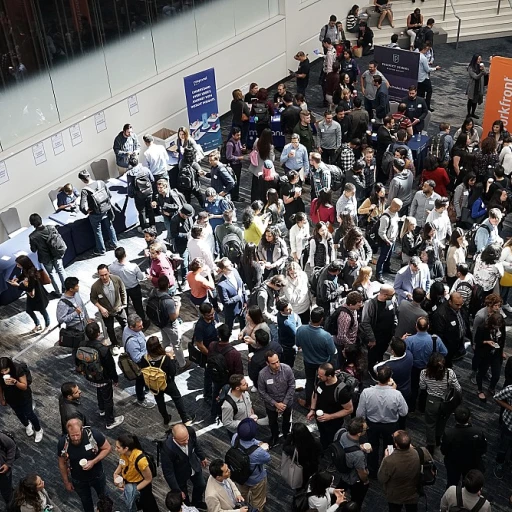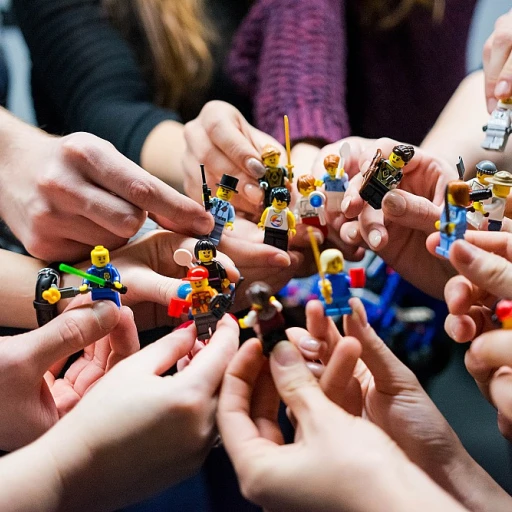
The Role of a Chief Human Resources Officer
The Pivotal Role of HR Leadership
The Chief Human Resources Officer (CHRO) serves as a linchpin in organizations, especially when it comes to navigating through the waters of change. It is their responsibility to oversee the HR functions while ensuring that strategic organizational goals align with HR strategies. In a rapidly changing business environment, the CHRO plays a critical role in managing transition processes and steering the organization through the complexities of change management. In the domain of HR leadership, the ability to implement change models effectively is invaluable. The Lewin Change Model is one such model that enables a structured approach to change management. This model, along with other theories like the ADKAR model, provides a framework for understanding how change can be successfully planned and managed within an organization. By examining these models, HR leaders can better support their teams and ensure a smooth transition from the current state to the desired future state. As CHROs are responsible for leading change initiatives, understanding the dynamics of the change process is essential. The three-step process of the Lewin model— unfreeze, change, and refreeze—serves as a guide for implementing organizational change. It emphasizes the importance of preparing employees for change (unfreeze), facilitating the transition (change), and ensuring that the new state becomes the norm (refreeze). HR leadership is not just about managing employees but also about fostering collaboration among team members and fostering a supportive environment. When change is on the horizon, the CHRO must work closely with staff to maintain morale and engagement, ensuring that everyone is aligned with the organization's vision and objectives. Exploring the dynamics of change through the lens of established models like the Lewin Model can empower CHROs to lead successful change initiatives and keep organizations competitive in a constantly evolving business landscape. For a deeper dive into change management frameworks valuable to HR professionals, consider reading about the ADKAR framework.Introduction to the Lewin Change Model
Exploring the Complexity of Change: Kurt Lewin's Insights
Understanding the ins and outs of the Lewin change model is crucial for a Chief Human Resources Officer aiming to effectively lead an organization through change. The Lewin model is a foundational change management model that provides a simple yet powerful framework for understanding organizational change. The model is built on the idea of organizational change through three stages: unfreeze, change, and refreeze. This process seeks to manage the transformation by preparing people, implementing the changes, and then solidifying the new status quo.- Unfreezing Stage: At the start, the main focus is on preparing the organization for change. This involves breaking down the existing status quo and motivating change. Employees and staff must recognize the need for change and the potential benefits that follow. This stage is essential for creating a collective willingness to embrace new approaches. As a strategy, clear communication and nurturing a supportive environment are critical to overcoming resistance.
- Change Stage: Once the organization is destabilized, it transitions into the change stage. It's during this phase that the organization implements the new processes and systems, which often involves training teams, restructuring roles, and refining operational methods. This stage emphasizes collaboration between team members and management to ensure the changes are sustainable and align with the organizational goals. The involvement of employees in these processes can mitigate resistance and enhance engagement.
- Refreezing Stage: In the final phase, the focus is on reinforcing and stabilizing the new environment, ensuring changes are thoroughly incorporated into the organization's cultural and operational fabric. This stage ensures that the change leads to long-term transformation rather than temporary adjustments. Ensuring support mechanisms are in place and identifying areas for improvement can help this process.
Applying the Lewin Change Model in HR
Leveraging the Lewin Model for Effective HR Initiatives
The Lewin Change Model, with its structured approach to change management, remains a valuable tool for Chief Human Resources Officers to drive business transformation successfully. The model is known for its simplicity and effectiveness in steering organizations through the change process. In their leadership role, HR leaders can utilize the three stages of the Lewin theory to sustain changes within their organizations. These stages are Unfreeze, Change, and Refreeze, which provide a framework for addressing the dynamic needs of businesses.- Unfreeze: This initial stage involves preparing the organization to accept that change is necessary. It requires breaking down the existing status quo before building a new equilibrium. Here, CHROs will focus on creating awareness about the change, justifying its need, and garnering the support of employees and stakeholders. Engaging team members is critical to successful unfreezing. By promoting transparency and collaboration, HR can alleviate resistance.
- Change: In this transitional phase, the organization moves from its current state to the new state. This step demands clear communication, guidance, and support to help employees embrace new processes or systems. HR plays a pivotal role in change lewin initiatives by providing training, facilitating teamwork, and ensuring that the change aligns with business goals. Applying effective communication strategies will help to sustain momentum during this phase.
- Refreeze: The final stage ensures that the changes stick. HR needs to embed new practices within the organization's culture to prevent regression. Developing policies and creating an environment that supports ongoing development are crucial. Reinforcing changes often involves rewarding success and solidifying new behaviors as the norm.
Challenges in Implementing Change
Overcoming Hurdles in Change Implementation
Change management within an organization, while essential, is often fraught with challenges that can restrict the full potential of the Lewin Change Model. Successfully implementing the three-stage model requires not only a strategic approach but also a keen awareness of the hurdles that a team might face.- Resistance to Change: Human nature often balks at the uncertainty brought about by change, clinging stubbornly to the status quo. Employees may worry that the change will disrupt their workflow, resulting in a reluctance to unfreeze attitudes and processes.
- Communication Gaps: Clear and open communication is critical, yet missteps here can lead to misunderstanding and fear. The lack of a well-disseminated vision for the change can leave staff reluctant to embrace the new course.
- Resource Allocation: Implementing planned change demands time and resources. Organizations sometimes struggle with dedicating sufficient energy and team members to propel the model through its stages: unfreeze, change, and refreeze.
- Ensuring Collaboration: Transition periods can strain relationships and collaboration among team members. Effective teamwork and support are crucial in overcoming the disruption that change can bring.
Case Studies: Successful Change Initiatives
Examples of Organizations Successfully Implementing Change
- Leading Tech Firm: A renowned technology company embraced the Lewin change model during its digital transformation. By first unfreezing, the leadership communicated the necessity of shifting from traditional systems to cloud-based solutions. This critical step was accompanied by training programs, enabling employees to understand the impending changes. The movement to the new system was systematically supported by change agents who facilitated the transition while maintaining team morale. The model's final refreeze stage ensured that the new processes were integrated into daily routines, reinforcing the change across the organization.
- Retail Chain Transformation: In a bid to enhance customer experience, a major retail chain applied the Lewin model to revitalize its customer service approach. Unfreezing involved identifying outdated practices hindering staff performance and establishing a new vision. Employees were motivated with the promise of a better work environment post-transition. The organization focused on moving towards enhanced service models, supported by targeted training for employees. The refreezing stage cemented changes through regular feedback sessions and performance incentives, ensuring the organizational change remained effective.
Key Takeaways from Successful Change Initiatives
- Importance of Employee Involvement: Change is more likely to be accepted when employees feel involved and see the benefit in each stage of the process.
- Strong Leadership and Clear Vision: Leaders who communicate a clear vision and roadmap instill confidence, making the unfreeze, change, and refreeze stages more manageable.
- Ongoing Support and Training: Sustained support and training during and after the transformation ensure the change is not only implemented but maintained effectively.
By examining these cases, we see the Lewin change model's impact when strategically applied, reinforcing the need for robust planning and collaboration between team members throughout the change management process.
Future Trends in HR and Change Management
Anticipating Future Developments in HR Leadership and Change Management
The realm of Human Resources, especially at the leadership level, is in a continuous evolutionary cycle. This calls for Chief Human Resources Officers (CHROs) to stay abreast of the latest trends in change management to effectively lead their organizations into the future. The Lewin Change Model, renowned for its simplicity and efficacy, remains relevant as a foundational framework for managing change. However, future trends suggest a hybridization of models for more nuanced and dynamic approaches.- Emphasizing Employee Experience: With an increasing focus on how change affects individuals, leaders are incorporating holistic approaches to ensure employees feel heard and valued during transitions. This stage-oriented attention aligns with the Lewin model, particularly during the unfreeze stage, where organizations prepare staff for impending changes.
- Integrating Technology with Change Processes: Automation, AI, and other technological advancements enhance collaboration and streamline change processes. This tech integration supports the refreeze stage by embedding new systems into the organizational culture and ensuring smooth transitions.
- Dynamic and Continuous Change Management Models: Unlike the static nature commonly associated with the three-step Lewin Theory, contemporary models advocate for a continuous cycle of planned changes. This reflects a shift from merely implementing change to sustaining a dynamic state of progress and adaptation.
- Fostering a Change-Ready Culture: The shift towards a culture that inherently supports change is gaining prominence. Organizations are aiming for a culture where change is not just a process but a part of the organizational DNA, thereby reinforcing the status quo in a refreshed context.
- Leveraging Multi-Disciplinary Teams: Collaboration across various departments leads to a more comprehensive and inclusive approach to change management. By harnessing diverse perspectives, organizations can address potential challenges from various angles, akin to the Lewin model's collaborative nature in every stage.












